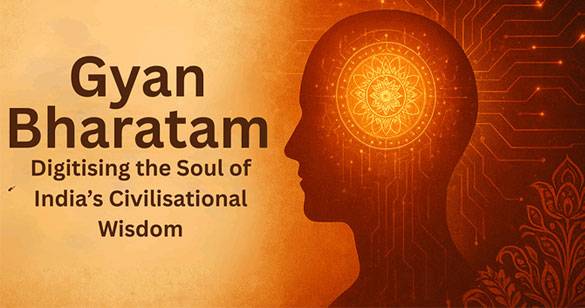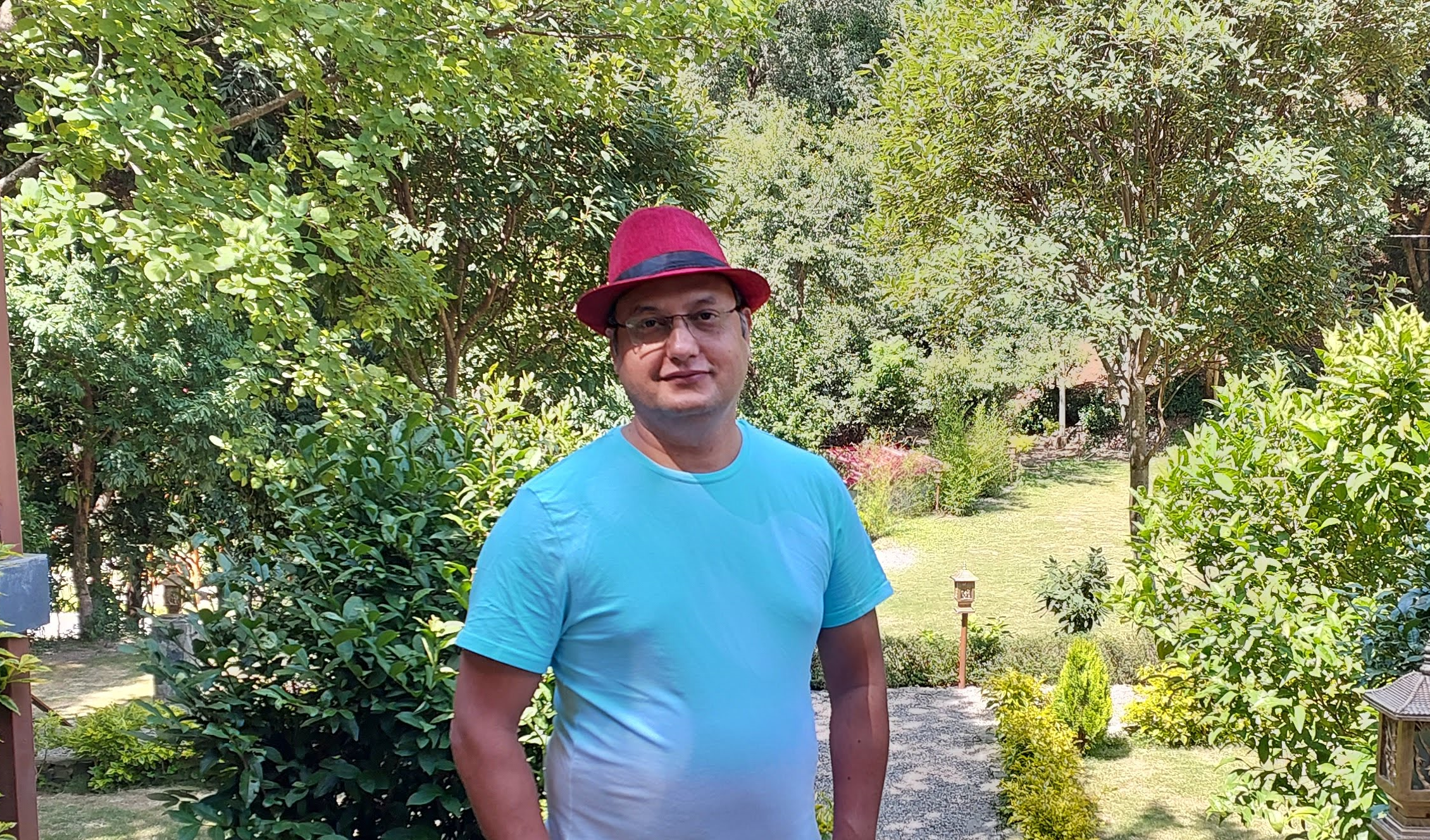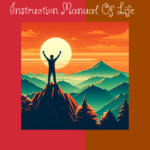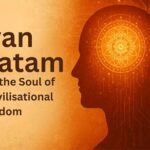
From Manuscripts to Machines: Gyan Bharatam and the Digital Renaissance of India’s Knowledge Legacy
rime Minister Narendra Modi launched the Gyan Bharatam Portal on Friday, a comprehensive digital platform designed to preserve and provide global access to India’s vast collection of ancient manuscripts. The initiative aims to digitize one crore manuscripts, representing what Modi described as the world’s largest manuscript collection.
Speaking at the International Conference on Gyan Bharatam in New Delhi, Modi called the mission “a proclamation of India’s culture, literature and consciousness” and emphasized its role in preventing intellectual piracy of traditional Indian knowledge systems. The portal serves as an AI-driven national repository that will make digitized manuscripts publicly accessible across multiple languages.
Digitizing and preserving India’s vast manuscript heritage through initiatives like the Gyan Bharatam Portal is a crucial first step toward building a truly Indian Large Language Model (LLM).
Building the Knowledge Corpus
India’s ancient manuscripts—now being systematically digitized—span philosophy, science, medicine, literature, mathematics, and more, across nearly 80 languages. By turning these handwritten and rare documents into machine-readable digital formats, the initiative is creating an unprecedented, authentic, and diverse data corpus. This rich, India-centric dataset is necessary for training and fine-tuning LLMs that accurately represent the country’s intellectual and cultural legacy.
Enabling True Multilingual and Cultural Representation
Existing global LLMs—like GPT—have limited exposure to Indian languages, scripts, and concepts. The Gyan Bharatam Mission makes possible the collection of high-quality, diverse textual resources in multiple Indian languages, which is essential for models that aim to understand, generate, and translate nuanced Indic knowledge.
Foundation for Model Training and Application
As digitized manuscripts become available in structured formats, AI researchers can use them to:
- Train language models that grasp Indian philosophical, technical, and artistic knowledge.
- Build tools for translation, question-answering, and summarization in Indian contexts and languages.
- Preserve endangered scripts and linguistic features unique to the subcontinent.
Accelerating India’s LLM Ecosystem
This digitization underpins major national projects like BharatGen and the Government’s own LLM efforts, which focus on using local data to develop models for Indian society’s needs—breaking dependence on foreign LLMs and ensuring data sovereignty.
In summary, by transforming India’s manuscript heritage into an accessible digital treasure, the Gyan Bharatam Portal is laying the groundwork for robust, culturally rooted, and multilingual Indian LLMs—serving as the essential starting point for AI models tailored to India’s language, knowledge, and societal landscape.
Preserving India’s Knowledge Legacy
The Gyan Bharatam Mission, announced in this year’s Union Budget with an allocation of Rs 60 crore, builds upon the foundation laid by the National Mission for Manuscripts established in 2003. According to the Ministry of Culture, India possesses an estimated five to ten million manuscripts covering diverse subjects including philosophy, medicine, mathematics, astronomy, literature, arts, architecture, and spirituality.
Modi highlighted that these manuscripts exist in nearly 80 languages and represent “unity in diversity,” spanning from Sanskrit and Prakrit to regional languages like Assamese, Bengali, Kannada, and Malayalam. The Prime Minister noted that while millions of manuscripts were destroyed throughout history, those that survived demonstrate “how devoted our ancestors were to knowledge, science and learning”.
Technology-Driven Cultural Renaissance
The portal incorporates advanced technologies including artificial intelligence to accelerate digitization processes and enhance accessibility. Modi emphasized that AI will help understand ancient manuscripts “in greater depth and analyzed more comprehensively,” while presenting their knowledge to the world in an “authentic and impactful manner”.
The Prime Minister positioned the initiative within the broader context of India’s digital transformation, noting that the global cultural and creative industries are valued at approximately $2.5 trillion. “Digitized manuscripts can feed this sector, serving as a vast data bank and inspiring data-driven innovation,” he stated.
International Collaboration and Youth Engagement
The mission extends beyond India’s borders through partnerships with culturally linked countries. Modi announced collaborations with universities in Thailand and Vietnam to train scholars in deciphering manuscripts in languages such as Pali, Lanna, and Cham. The government has also worked with Mongolia, gifting reprinted volumes of the Mongolian Kanjur and distributing them to monasteries in Mongolia and Russia.
Modi made a special appeal to India’s youth to participate in the mission, noting that 70 percent of conference participants were young people. “Involvement of youth of the country will accelerate the process of exploring the past through technology and making this knowledge accessible to humanity, grounded in evidence,” he said.
The three-day international conference, running from September 11-13 under the theme “Reclaiming India’s Knowledge Legacy through Manuscript Heritage,” brings together over 1,100 participants including scholars, conservationists, technologists, and policy experts from India and abroad. The event features an exhibition of rare manuscripts and presentations on critical areas such as conservation methods, digitization technologies, and legal frameworks.
Here is a table of references related to this article, having the Gyan Bharatam Portal and India’s manuscript digitization mission, including article titles and clickable links:
| Title | Link |
| Prime Minister Shri Narendra Modi addresses the International Conference on Gyan Bharatam | PIB Press Release |
| PM Modi Launches Gyan Bharatam Portal, Calls Mission a Voice of India’s Cultural and Knowledge Legacy | NewsOnAir |
| Press Note: Gyan Bharatam Mission | PIB Press Note |
| Gyan Bharatam Portal | DD News |
| PM Modi Launches ‘Gyan Bharatam Portal’ to Boost Manuscript Digitisation | Adda247 Current Affairs |
| Gyan Bharatam Mission (2025): Digitizing India’s Knowledge Legacy | IMPRI Insights |
| PM addresses the International Conference on Gyan Bharatam | PM India |
| PM launches digital portal for preserving manuscripts | Hindustan Times |
| Manuscript Database – National Mission for Manuscripts | Namami.gov.in |
| Special Programme on First-Ever Gyan Bharatam International Conference | NewsOnAir Spotlight |
LIVE : PM Modi addresses the International Conference on Gyan Bharatam in New Delhi
Above each entry provides direct access to news articles, official press releases, or institutional resources on the topic of India’s manuscript heritage and the Gyan Bharatam digital initiative.

Dr. Amit is a seasoned IT leader with over two decades of international IT experience. He is a published researcher in Conversational AI and chatbot architectures (Springer & IJAET), with a PhD in Generative AI focused on human-like intelligent systems.
Amit believes there is vast potential for authentic expression within the tech industry. He enjoys sharing knowledge and coding, with interests spanning cutting-edge technologies, leadership, Agile Project Management, DevOps, Cloud Computing, Artificial Intelligence, and neural networks. He previously earned top honors in his MCA.



